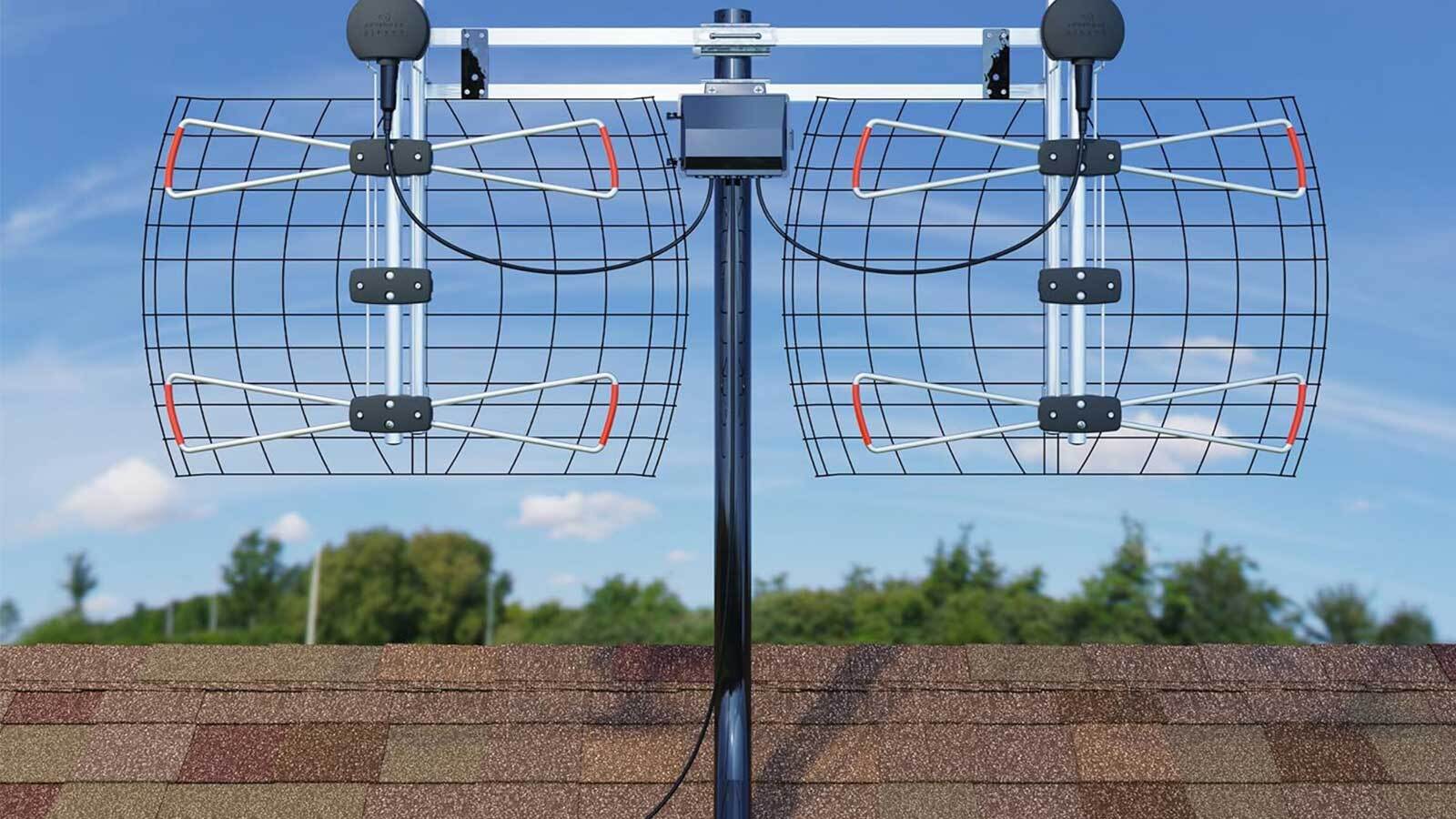Technology
Connect an antenna to a TV: Watch movies, shows and sports for free

The television antenna. “Rabbit ears.” It may seem strange to many of us (or strange to the youngest of us), but there was a time when the antenna was the only way to access all three (yes, three!) glorious national broadcast channels, plus, if you’re in luck, some local programming too. Very few televisions have a built-in antenna anymore, but there are aftermarket antennas, both cheap but effective indoor options and rugged outdoor options that allow anyone to get the now five (yes, five!) national networks and all other local signals for free. . After all, you usually can’t get local news through streaming apps. And don’t worry, even in rural areas, far from the transmission towers of these stations, strong antennas are available that can pick up this free entertainment. However, since TV antennas are no longer part of a new TV, it is a matter of installing them. It’s easier than you think, but probably not as easy as you’d like. Do not worry. We will guide you through it.
What kind of antenna do I need?
There are two important things to consider when choosing your antenna: your distance from the origin of the transmitter signals and the nature of the room in which you will install it.
For city dwellers, you probably live close enough to your local station’s broadcast centers that a small indoor antenna picks up everything you need so you can watch local news, sports, syndicated programming, and shows from the station’s national partner. Indoor antennas no longer look like long metal rods, but are sheathed rods or plastic plates. Most indoor antennas work best within 50 miles of the television signal (although better models can extend up to 80 miles). Indoor antennas generally offer less range than outdoor antennas, and are best for apartment dwellers or renters who cannot or do not want to install a roof or balcony antenna.
However, if you are willing and able to do so, outdoor antennas offer better performance than indoor antennas. Especially if you are in the far suburbs or in the countryside, outdoor antennas are the right choice. Even if you are within a 50 mile range, over-the-air television signals become weaker over greater distances, so you may experience signal degradation or weather interference. So it is much better to buy a stronger antenna. Some of the strongest ones even allow you to receive channels from neighboring markets. This is especially true for people living in rural areas, who will want to check the range of future antennas very carefully, because with a cheaper or weaker antenna you may only be able to receive a handful of channels, which you could get for a little more. tens.
Keep in mind that outdoor and long-range antennas require much more assembly and configuration, while indoor antennas require almost plug-and-play.
What can I watch with an antenna?
There are now five national television companies in almost every television market in the United States: ABC, CBS, CW, FOX and NBC. The national broadcaster will always provide primetime programming (8:00 PM EST to 11:00 PM EST), and ABC, CBS, and NBC also have many late night, weekend, morning, and afternoon programs. CW and FOX have fewer national broadcast hours.
Non-national broadcasts are provided by the local channel. This could be local news, local sports, syndicated shows or movies, or paid programming. In addition to the five profitable channels, there is a public broadcaster financed by subsidies and donations, PBS. PBS operates similarly to the five commercial networks in that there tends to be uniformity in some hours (usually primetime) across markets, but local stations decide the programming between those hours. PBS shows tend to focus on educational content or sometimes even local government broadcasts. In addition to affiliate stations of the national broadcasters and PBS, there are many independent stations that may have their own programming, either from their own studios or through a syndicate. This could include religious programming or locally produced ‘public access’ style shows, where local people create their own shows and the station broadcasts them. There are some local independent stations that only broadcast paid programs: shop-at-home broadcasts such as QVC or HSN or long-form advertisements (“infomercials”) for products or services. The best resource to find out which channels are available in your arenas AntennaWeb and the FTC’s receipt card.
Okay, so how do I install my antenna?
First, especially if you purchase a more complicated outdoor antenna, there will likely be significant assembly required. Follow all instructions that came with your purchase to assemble the parts and create your antenna. While these antennas are generally better and more powerful, there is also more room for user error in setup, which can be frustrating. Some things you may need to do:
- Connecting parts (a screwdriver may be required)
- Connect to a power source (if necessary)
- Mount the antenna on a roof or balcony (probably requires power tools, a ladder, etc.)
If you buy a powerful 360-degree antenna but can’t mount it on the roof, it may be less effective than a cheaper flat antenna with a plastic housing that you can easily mount near a window.
Another example: A roof-mounted antenna may need to be connected to internal wiring and coaxial connection plates in your walls if the antenna’s cable does not reach your television directly or a cable splitter. This creates a much, much larger job that may even require a professional to install. There are even products like Tablo, which converts the TV signals received through your antenna into digital content on your personal Wi-Fi network, so you can watch on your TV, as well as with apps for phones or tablets. So there are many decisions to be made before installing your antenna, and every situation is slightly different. However, we will discuss the most common ones.
Installing an outdoor antenna
Step 1: Choose your installation spot.
Ideally, a good spot is as high as possible to minimize interference from your own home and others around it.
Step 2: Know where your antenna’s connection goes.
Where are you going to route the cable? Internal wiring? Splitter box? Straight to the television? What is the path? Do you need an extension cable? Make a plan and purchase any additional equipment you need in advance.
Step 3: Mount the antenna.
You may have to hire someone to do this, no matter how comfortable you are with power tools and on your own roof, but if you only do the installation on a stand on your balcony, you can probably make it on your own.
Step 4: Power Your Antenna.
Some antennas have amplifiers that need to be connected via USB, and some get power from the connection to the devices they use, while others require a direct power connection.
Step 5: Connect to your television.
Whether directly or via a splitter box/internal wiring, you will need to connect to your television. For direct TV-to-antenna connections, this is typically done via the coaxial connector, which is shaped like a small protruding corkscrew. It’s the same kind of connection you use for cable TV or wired Internet connections. There’s probably a “CABLE/ANT” label next to your TV, where ANT stands for “antenna.”
Step 6: Scan for channels.
Each TV will be slightly different for this, but there should be an option in your television’s menu system to scan for channels. If you do this, the channels should have a strong enough connection that you can simply use the “channel up” and “channel down” buttons to access them in the future.
Installing an indoor antenna
Indoor antennas are usually only intended for one TV and you are more likely to work with TV out than with antenna in.
Step 1: Connect the antenna to your TV.
Doing this first will give you an idea of how far away you can place the antenna.
Step 2: Find the best spot for the antenna.
Typically, the closer you are to outside walls or, better yet, to a window, the better your reception will be. If you have to use a cable extender to get there, it might be worth it.
Step 3: Mount the antenna.
You may need to mount the antenna to a wall, use glue to stick it to a window, or simply find a surface to place it on. This varies per type and brand of antenna.
Step 4: Turn on any amplifiers.
Many indoor antennas have an amplifier to improve signal quality. This requires a power source, usually USB.
Step 5: Scan for channels.
Use the Scan for Channels menu option on your TV to see which channels you can now access.
Troubleshooting a TV antenna
If you notice that your antenna is not receiving the number and quality of channels you like, there may be a few things you need to check and adjust.
- Location – The fewer physical objects between the antenna and the outside world, the better.
- Amplifier – If your antenna has an amplifier, make sure it is connected and active.
- Weather – Unfortunately, weather conditions, especially thunderstorms, can degrade over-the-air signals. This may be unavoidable.
- Your TV – If you have your antenna connected while your TV is on, it may not recognize it. A quick reset (switch off, unplug, wait a few minutes, plug back in, switch back on) can fix this.
- Adjust – If your antenna has adjustable elements, you may need to move them to improve signal quality.
Finally free TV
To enjoy! Make sure you keep the volume on SNL low so it doesn’t wake your parents.













